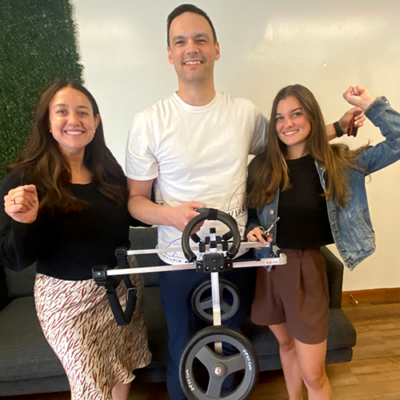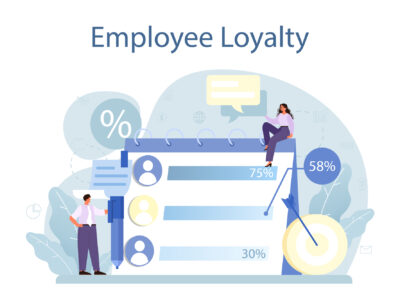Most of us spend about 1/3rd of our lives at work. That’s a lot of time to spend at work, and it can have a big impact on our lives. A toxic workplace can quickly wear you down and leave you burnt-out, while a supporting workplace can have you feeling engaged and inspired. That’s why it’s so important to have a people centric workplace that puts people and their wellbeing first.
A people centric culture at work not only helps employees with their quality of life, it also helps the business too. It can lead to increased productivity, higher retention, boost innovation, enhanced reputation, and much more. These things can all result in a more efficient and effective workforce that brings in more profit.
But what exactly is a people centric workplace, and how can you make your workplace once that puts people first? In this blog, we’re going to cover everything you need to know about people centric workplaces and how to implement them. So keep reading to learn more about how you can improve your workplace and the lives of your employees.
What Does People Centric Really Mean?
First, let’s talk about what people centric really means. It’s people centric, meaning people are put before things like profits and efficiency. That’s an oversimplification though, and there’s a lot more to it than simply putting people first.
A people centric workplaces is one where leaders have a deep understanding of their employees, work to create a comfortable and welcoming workplace, encourage and support their employees, and have a positive working environment. They go out of their way to make sure employees are doing well, engaged, and connected in the workplace.
Let’s go a little deeper though, as a more complete understanding of what people centric really means will make it easier to implement in your workplace.
One of the most obvious aspects of a people centric workplace is prioritizing employee needs and wellbeing. For example, say an employee is struggling with a new project. They need some extra help, guidance, and support to get through it and produce the desired results.
A people centric workplace would notice that and step-in to provide that employee with the support they need. That might mean providing extra training, having a more experienced employee offer guidance, troubleshooting with them, or communicating with them about their needs and struggles. That shows that you as a leader or employers prioritize employees and care about them.
Another aspect of a people centric workplace is valuing your employees. Many businesses have the mindset that employees are disposable. While you can always hire more people, viewing employees as disposable shows that you don’t value them. That has a big impact on employees, their productivity, motivation, engagement, and retention.
A workplace that prioritizes people also sees their value. They know that their employees are what keeps things running, and they treat their employees like the valuable assets they are. Employees are given respect, praised for their successes, providing extra training and education, etc.
This shows to employees that you value them and care about them. In turn, employees are more loyal and dedicated to the company. They feel like they are an important part of the process, valued, and connected to the company. When employees feel important and cared about, they are much better workers.
While employees are a huge focus of a people centric workplace, that can’t happen without people centric leadership. So now, let’s look at what people centric leadership is and how you can become a people centric leader.
People Centric Leadership
You can’t create a people centric culture without people centric leadership, so understanding how to put people first as a leader is key. Here are a few of the key characteristics of people centric leadership.
Open and Honest Communication
First and foremost, a people centric leader has to encourage open, honest, and effective communication. This shouldn’t come as a surprise, but you can’t meet the needs of your employees without listening to them.
You need to create an environment where people feel comfortable communicating their needs, struggles, ideas, and more. When people are talking, actively listen instead of waiting for an opportunity to talk. Listen to what they are saying and take them seriously. Communication goes a long way in terms of making people feel valued and cared about.
Builds Trust and Values Feedback
Another key aspect of people centric leadership is building trust and valuing feedback. These two are closely related, which is why they’re in the same section together.
Trust is necessary for creating a safe, welcoming, and inclusive environment. Employees need to feel like they can trust you to communicate openly, and valuing feedback can be a great way to build trust. Taking feedback seriously and acting on it shows that you trust your employees and their input. That in turn helps build trust, which allows for more effective communication.
Promotes a Healthy Work-Life Balance
Last but not least is promoting a healthy work-life balance. It’s easy to act like you put people first, but prioritizing a sustainable work-life balance really shows you are putting your money where your mouth is.
At the end of the day, work is a means to support ourselves. People want to enjoy their lives outside of work, and that’s why work-life balance is so important. If you make an effort to ensure people have a good balance, it truly shows that you are putting their wellbeing over things like profit and efficiency.
This ties into the other characteristics too. You won’t know what peoples’ balance is like without talking to them, and you’ll have to value their feedback to make the changes necessary for a better work-life balance.
People Centric Culture
Now we know what people centric leadership is, but what exactly is a people centric culture? In this section, we’ll cover the key characteristics of a people centric culture so you know what to focus on in your workplace.
Valuing Well-Being
This one is obvious, but it’s important to mention nonetheless. A people centric culture places a lot of value on well-being. If you are putting your people first, that means you are caring about their own wellbeing and prioritizing it.
Again, this can be implemented in a variety of ways. You might help people create a healthier work-life balance, get them training to better their skills, or provide them with the support and resources they need to work more comfortably.
Regardless, the point is that you are putting your employees first and making decisions that will help better them and their wellbeing.
Adapting to Change
Adapting to change is also a big part of a people centric culture. Life isn’t simple or predictable, and situations change constantly. Change is necessary if you want to make positive improvements to your workplace or culture.
As a result, people centric workplaces have to adapt to change. For example, there might be an employee who is getting increasingly burnt-out with their current position and wants a change. A people centric workplace might help that employee find a new position within the company that better suits their current needs.
Celebrating Diversity
Lastly, people centric cultures value diversity. Every employee is a unique person with their own strengths and weaknesses. A good workplace understands that and embraces that everyone brings something different to the table.
Introverts in the workplace are a great example of this. Introverts often get overlooked in the workplace, but they have a lot to offer. Supporting introverts shows that you want your employees to do their best and value what makes them special.
Implementing a People-Centric Workplace
So, how can you turn your workplace into one that’s people centric? While it may sound like a monumental undertaking, it’s actually pretty simple if you know the right strategies.
The most important thing to keep in mind is that it’s a transition, and you need to help guide and support people through that. You can’t just expect them to suddenly change their habits and practices. You need to lead by example and help implement the changes.
Getting into specifics, leadership training and development is a good start. If your leaders start putting people first, the employees under them will follow. Training your leaders to be people centric will help build trust, better communication, and bring about more people centric thinking.
Another thing you can do is focus on employees. Things like wellbeing initiatives can show employees that you really care and are willing to prioritize their wellbeing. Implementing employee feedback mechanisms can also show that you value employees and their input.
Also, embracing diversity is a good strategy too. Like explained in the last section, focusing on diversity shows that you support your employees despite their differences.
Impact on the Bottom Line
Before wrapping up, let’s quickly look at how a people centric workplace can impact the bottom line. Though the focus is on your employees and their wellbeing, putting people first comes with business benefits as well.
Employees are fitter, happier, and more productive in people centered workplaces. They feel like they are cared about and valued, which in turn means they are more engaged and motivated at work.
That also has an impact on retention. Employees are much less likely to leave if they feel like their needs are being met and they are cared about. Putting employees first shows that you value them, resulting in better retention rates.
It can also lead to a stronger culture of innovation. Again, employees work better and are more motivated when they feel cared about. Though you are focusing on employee wellbeing, you’ll also get the benefit of more excited and engaged employees.
Lastly, it also leads to a better reputation as a company. People will know your company as one that actually cares about employees. That has numerous benefits, such as a better talent pool, increased retention, increased sales, and more.
Put People First with Team Bonding
People centric workplaces put their employees first. They value their employees’ wellbeing, futures, and satisfaction at work. Leaders listen to their employees, value their feedback, and communicate openly and honestly with them. And in return, employees are more motivated, productive, and engaged at work.
Starting putting your employees first with Team Bonding. We have over 25 years of experience doing corporate events, and we have numerous events that are perfect for building relationships and putting people first. So get in touch with us today and create the people centric workplace you and your employees deserve!

















